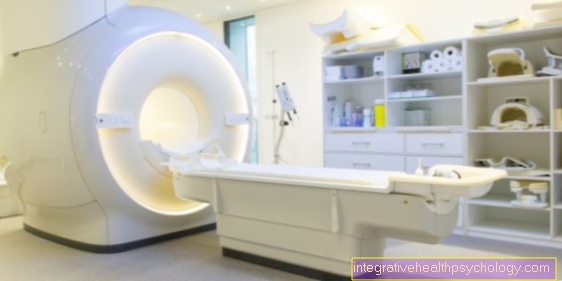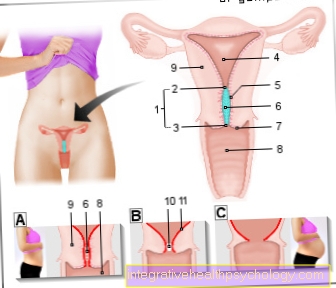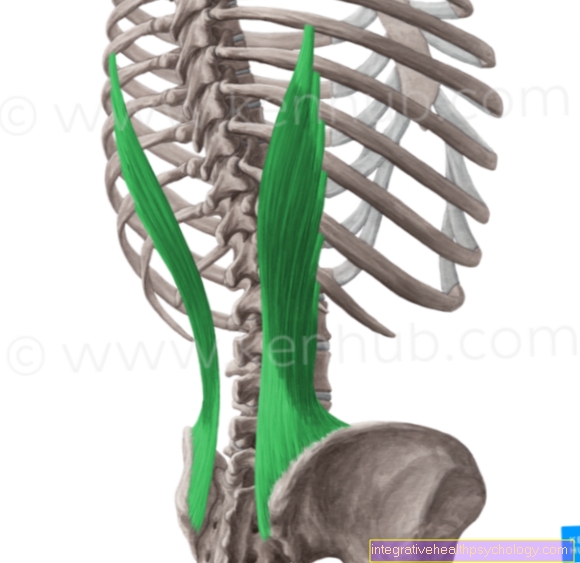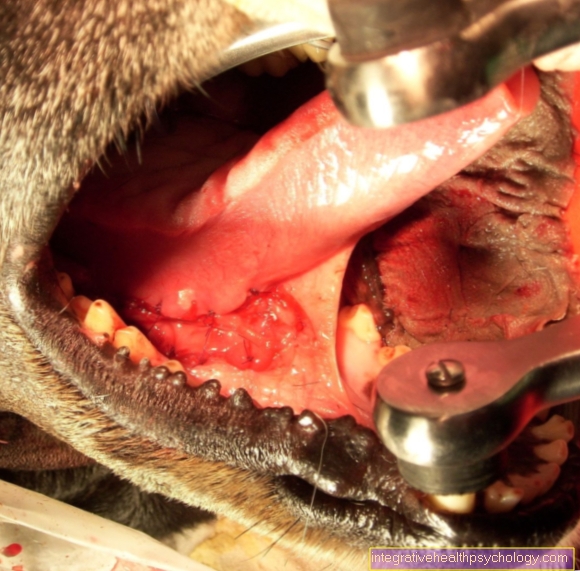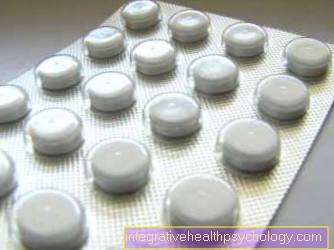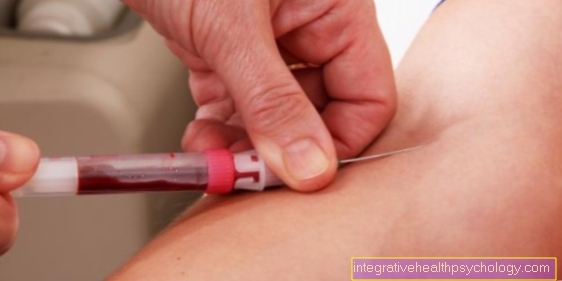Therapy of endocarditis
How is endocarditis treated?
The therapy of Endocarditis consists in giving high doses Antibiotics.
To optimize the therapy, it is necessary to isolate the causative pathogens from the blood and to determine them in a microbiological laboratory.
Therefore, repeated blood tests at intervals of one to two hours are unavoidable.

The detection of so-called pathogens is particularly time-consuming. HACEK group (this refers to a group of bacteria that is naturally located in the oropharynx, has particularly slow growth and is responsible for around 5 to 10 percent of all heart inflammation).
HACEK stands for:
- Haemophilus influenzae, parainfluenzae, and aprophilus
- Actinobacillus
- Cardiobacterium
- Eicenella
- Klingella.
Initially, antibiotic therapy for endocarditis is intravenous (i.v., i.e. via the vein) in order to be able to achieve high levels of the antibiotic in the blood permanently and as quickly as possible and thus to achieve maximum effect against the bacteria.
It usually takes 4 to 6 weeks for the skin to heal. A therapy with an antibiotic sometimes has to be carried out much longer.
Duration of therapy
Endocarditis is a serious infection, so the therapy must be carried out for a long time, two to six weeks is the minimum. If a patient has artificial heart valves, the duration of antibiotic therapy must be extended to eight weeks, depending on the pathogen. If a patient's natural heart valves are severely damaged or completely destroyed by endocarditis, cardiac surgery becomes necessary, which extends therapy and the time to recovery.
Which antibiotics are used?
Antibiotic therapy is carried out in two stages. If the doctor suspects endocarditis, the possible pathogen is not yet known. Therefore a broad therapy is started. This therapy includes ceftriaxone, gentamicin and vancomycin, three antibiotics with a very broad spectrum of activity. By repeatedly taking blood cultures, a pathogen can be found in 80-90% of cases and the antibiotics used can be adjusted. The following antibiotics are typically used in the treatment of endocarditis: Penicillin G or ceftriaxone for penicillin-sensitive streptococci. Penicillin-resistant streptococci and enterococci are treated with ampicillin and gentamicin, staphylococci with flucloxacillin or oxacillin, and in the case of methicillin resistance, vancomycin is used. In the case of artificial heart valves, in addition to the antibiotics mentioned, antibiotics with a stronger effect and / or a broader spectrum of activity must also be used; the use of gentamicin, vancomycin and rifampicin is therefore more common. For each pathogen, a certain combination of antibiotics is particularly suitable, depending on whether or not an artificial heart valve is present.
Are antibiotics always used?
Endocarditis is usually caused by bacteria, in which case antibiotics are used for therapy. However, there are also forms of endocarditis that are triggered, for example, by an autoimmune reaction. Antibiotic therapy then does not make sense. So antibiotics are almost always used in endocarditis because endocarditis is almost always caused by bacteria in the bloodstream that attach to the heart valves. The most common triggers are streptococci and staphylococci.
Read more on the topic: Endocartitis
How long are antibiotics used?
In bacterial endocarditis, antibiotics are used until the endocarditis has healed. Depending on the pathogen, the age of the patient and the presence of an artificial heart valve, the duration is two to eight weeks. Continuous use of antibiotics is usually not necessary after bacterial endocarditis. However, after the bacterial infection has healed, before e.g. Take antibiotic prophylaxis during dental procedures to prevent re-endocarditis.
What do you do with a penicillin allergy?
Penicillin G is the standard drug for bacterial endocarditis caused by streptococci of the Viridans group or S. bovis. In the case of a penicillin allergy, other antibiotics can be used, in many cases these are so-called "reserve antibiotics", to which e.g. Vancomycin and Teicoplanin include. These are actually reserved for use with pathogens with a high resistance to standard antibiotics, but are still used for penicillin allergies and endocarditis.
What is an Antibiogram?
An antibiogram is the result of an antibiotic resistance test of a pathogen. Can a bacterium e.g.are detected in the blood of a patient, it is applied to an agar plate (a special laboratory plate for growing bacteria and other pathogens) for testing. Then small plates with antibiotics are placed on this plate. Each of these antibiotic platelets contains a different active ingredient. If a pathogen is resistant to a certain antibiotic, it can still grow in close proximity to this antibiotic platelet. If a certain antibiotic is effective against the pathogen to be tested, it cannot grow and a so-called "inhibition zone" is created. The size of the inhibition zone is measured and can be converted into the effectiveness of the antibiotic against the pathogen. The antibiogram summarizes these results clearly in a table and is an important aid in making decisions about which antibiotic therapy should be carried out.
Read more on the topic: Antibiotic resistance






